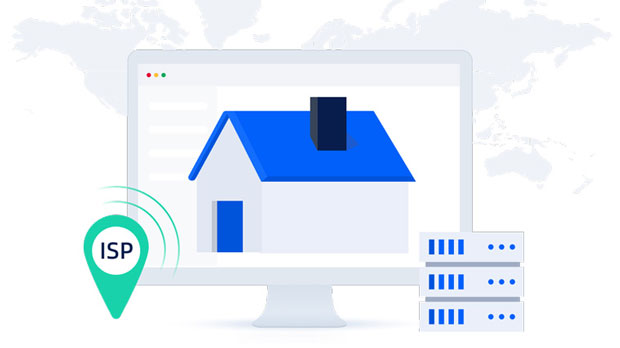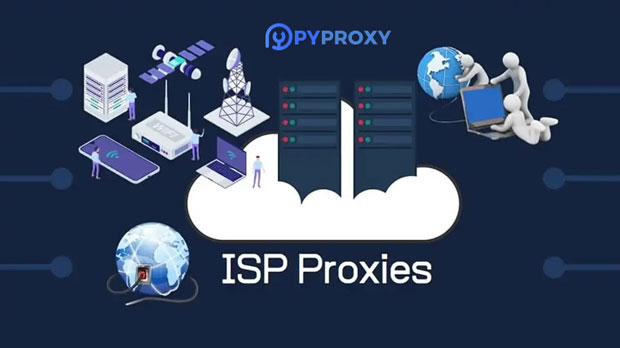Will the free IP proxy reveal my personal information?
When considering the use of free ip proxies, many users may wonder about the security risks involved, especially whether their personal information could be compromised. Free proxies promise anonymity and help users maintain privacy online, but these services often come with risks. While the idea of masking one’s IP address might seem appealing, the lack of regulation and potential vulnerabilities in free proxies make them a double-edged sword. In this article, we will explore whether using free IP proxies can lead to the exposure of personal information and analyze the security risks associated with them. We will also discuss how users can mitigate these risks and make informed decisions about their online privacy. Understanding IP ProxiesBefore delving into the security risks, it’s important to first understand what an ip proxy is. An IP proxy acts as an intermediary server that routes your internet traffic to its destination, masking your real IP address in the process. By doing so, proxies can enhance privacy, enable users to access geo-restricted content, and circumvent censorship. Proxies come in different types: residential, datacenter, and public proxies, each varying in security and reliability. While paid proxies are often more secure due to better infrastructure and services, free proxies typically do not offer the same level of protection, which can raise concerns regarding data privacy.The Security Risks of Free IP ProxiesWhile free IP proxies may seem like an attractive option for those looking to maintain anonymity online, they are often fraught with security risks. Many of these risks are tied to the nature of free services, which are often underfunded, poorly managed, or even malicious. Below, we will examine the primary security concerns that come with using free IP proxies.1. Data Collection and MonitoringOne of the most significant risks of using free IP proxies is that these services often track and log user data. Since they are not accountable to paying customers, free proxy providers may collect your browsing history, IP addresses, and other personal information for their own profit. This data could be sold to third parties, such as advertisers, or worse, be used for malicious purposes. Unlike paid services that typically have clearer privacy policies, free proxies may lack transparency, making it hard to know what data is being collected or how it will be used.2. Malware and Phishing AttacksFree proxies, especially those that are not well-known, may expose users to malware or phishing attacks. Some malicious proxy servers are designed to infect users with viruses, ransomware, or other types of harmful software. Once connected to these proxies, users’ devices could become vulnerable to attacks that steal sensitive data, such as passwords, credit card numbers, and personal files. Since free proxies don’t have the same level of protection or monitoring as paid services, it’s easy for cybercriminals to exploit these vulnerabilities.3. Lack of EncryptionEncryption is one of the primary ways to protect sensitive data from being intercepted during transmission. Many free IP proxies lack adequate encryption protocols, leaving your online activity vulnerable to man-in-the-middle (MITM) attacks. In these attacks, hackers intercept your internet traffic and can access the data you send and receive, such as login credentials, private messages, and financial details. Without strong encryption, using a free proxy could put your personal information at risk of being exposed.4. Reliability and DowntimeFree proxies are often unstable and unreliable due to the lack of resources invested in their infrastructure. These proxies can frequently experience downtime or slow speeds, disrupting your online activities. More importantly, an unreliable proxy may disconnect suddenly, causing your real IP address to become exposed without your knowledge. If your real IP is revealed while you are still connected to the proxy, your online privacy could be compromised.5. Unsecure Data StorageAnother issue with free proxies is that they may not have secure data storage practices. If a free proxy provider keeps logs of your internet activities, these logs could be vulnerable to hacking or unauthorized access. If hackers breach the provider’s system, they could steal sensitive data and use it for malicious purposes. Paid services, on the other hand, typically employ better security measures and data protection protocols to ensure that user information remains safe.How to Protect Your Privacy When Using ProxiesWhile free IP proxies pose significant risks to personal information, there are steps you can take to protect your privacy. Here are some tips for safely using proxies, whether free or paid:1. Use Trusted ProvidersIf you choose to use a proxy, whether free or paid, make sure to research the provider thoroughly. Trusted proxy providers usually have a clear privacy policy, strong encryption, and a good reputation for maintaining user privacy. Look for reviews from reputable sources or feedback from other users to gauge the provider’s credibility. Avoid proxies that have a history of data breaches or suspicious activity.2. Enable Encryption and HTTPSAlways prioritize proxies that offer encryption and support HTTPS connections. Encryption protects your data from being intercepted, while HTTPS ensures that the connection between your device and the server is secure. If your proxy provider doesn’t support these features, it’s best to look for an alternative service that does.3. Avoid Providing Personal InformationEven if you are using a proxy, be cautious about the information you share online. Avoid logging into sensitive accounts, such as banking or shopping websites, when connected to a proxy unless you are certain the proxy is secure. Additionally, refrain from entering personal data like passwords or credit card numbers while using an unreliable or free proxy service.4. Use VPNs for Enhanced SecurityFor higher levels of security, consider using a Virtual Private Network (VPN) instead of a proxy. VPNs encrypt all your internet traffic, offering a higher level of protection than most proxies. They also tend to be more reliable and have clearer privacy policies, ensuring that your personal data remains safe.Conclusion: Weighing the Risks of Free IP ProxiesWhile free IP proxies may seem like a cost-effective solution for protecting your online privacy, they often come with significant security risks. The potential for data collection, malware infections, lack of encryption, and unreliable service makes using free proxies a risky endeavor. If privacy is a concern, it is better to invest in a reputable, paid proxy or, better yet, use a VPN for enhanced security. Ultimately, while free proxies may offer some level of anonymity, they may not be worth the risk to your personal information.
2025-02-03
























































